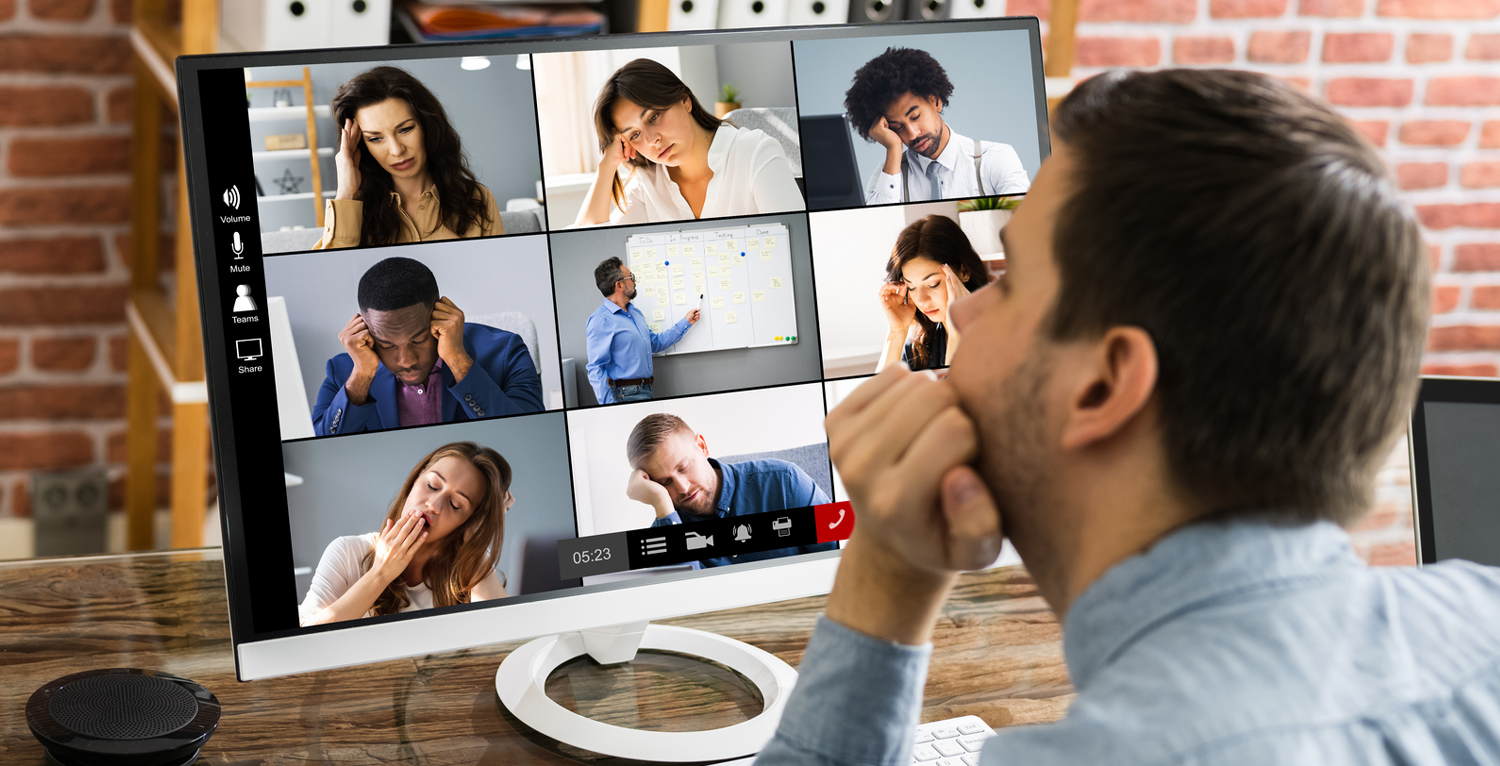
Cameras On Vs. Cameras Off: The Rise of Zoom Fatigue
Zoom Fatigue refers to feelings of tiredness, worry or burnout due to the overuse of video calling platforms.
To help those who fall victim to this, we first need to understand what’s driving it.
It has become a norm for employers to ask their team to have their cameras turned on during a meeting.
Whether this is to mimic the feel of an office, to monitor whether people are actually paying attention, or to simply demonstrate an air of professionalism, the fact is that this is quite a common request being made in the remote and hybrid working world.
If we think about the practicalities of being on Zoom, it is essentially like being in a meeting with a mirror propped up in front of your face. Now, you have to speak to a whole room of people while also having to watch yourself!
This can be particularly difficult for those of us who suffer from public self-consciousness, which is the tendency to fixate on how others are perceiving you.
Research published by Social Cognition builds on this idea, as it found that when people see their own faces on screen, they spend more time looking at themselves and thinking about how they appear than they do focusing on the conversation being had.
Interestingly, numerous studies have suggested that women are more likely to self-focus and feel anxiety when they are in the presence of a mirror. It wasn’t surprising, therefore, to see that a recent study from Stanford found that 1 in 7 women feel very fatigued after Zoom calls compared to 1 in 20 men. And the reason for women being disproportionately affected was because of the increase in ‘self-focused attention’, which is the heightened awareness of how one comes across or appears in a conversation.
The research also found that introverts suffered from Zoom Fatigue much more, as well as younger individuals and people of color. Looking at it from this perspective, enforcing the ‘cameras on’ rule in the workplace may be doing more harm than good, and could also be deemed as a problem of inclusion, considering different types of people are affected differently.
Looking at our own research, which found that over a quarter of respondents (28%) preferred to have their camera’s off during meetings, it may be time for companies to begin taking this into consideration if they haven’t already done so.
So, what are the ways an employer can combat Zoom Fatigue?
Firstly, making people aware of the ‘hide self-view’ option available on Zoom could be a simple and extremely helpful solution. This means that the person’s camera will still be on and they will be seen by everyone apart from themselves, and this can help with growing feelings of self-scrutiny. However, this may not work for all, as the idea of knowing people can still see you but you now cannot see yourself can induce anxiety in and of itself.
The second thing it comes down to is trust. If an employer trusts their staff, then they will be flexible towards having cameras on and off during a meeting, as they should trust that even if they cannot see someone it doesn’t mean they are not paying attention.
And finally, companies could also look at ways of trying to reduce video calls. Make use of simple voice calls and the chat box feature when you can, and move away from this virtual presenteeism mindset.
Copyright OrgShakers: The global HR consultancy for workplace transformation founded by David Fairhurst in 2020